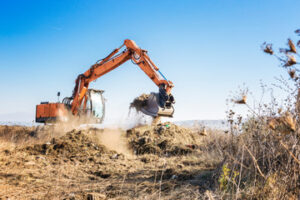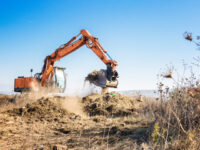Unlocking Property Potential with Thoughtful Land Clearing
Land Clearing Waco TX involves removing trees, brush, and undergrowth. This makes the area easier to navigate for vehicles and equipment. It also reduces the risk of accidents caused by tripping or falling debris.

The process also helps prevent fires by eliminating flammable vegetation. It can be performed by hand or using heavy machinery. Clearing requires permits and compliance with environmental regulations.
When land clearing is done properly, it opens up a property to a wide range of new possibilities for agricultural or construction use. It can also be beneficial to the environment and help maintain soil health. However, there are times when the process is not needed or can even be detrimental to the land and its natural resources.
Land clearing involves the removal of trees, brush, weeds, and other vegetation to make way for new construction or agriculture. This can include anything from a small garden to large industrial development. It typically requires the use of heavy equipment, including bulldozers and excavators, depending on the size and scope of the project.
The most important consideration in the land clearing process is making sure that all necessary safety measures are taken. This includes ensuring that all workers and vehicles have clear pathways to navigate the area, as well as eliminating any potential tripping hazards. Clearing can also help prevent fires, as overgrown plants and debris can easily catch on fire.
Another critical aspect of land clearing is ensuring that all necessary erosion prevention measures are in place. Erosion is a serious issue that can affect the integrity of the soil, as well as surrounding ecosystems and waterways. If not addressed properly, it can lead to significant damage that can be costly and time-consuming to fix.
Lastly, it is crucial to consider the impact of land clearing on the local wildlife. When forests and other natural habitats are cleared, countless animals lose their homes, which can lead to population declines or even extinction. By taking steps to minimize the impact on wildlife, land clearing can be a valuable part of an overall conservation effort.
Whether you need to clear your property for an upcoming construction project or want to improve its aesthetic, there are many reasons why it may be worth the investment. Clearing your property can boost its resale value, make it more accessible for future landscaping projects, and reduce the risk of pest infestations. It can also help you save money on maintenance by reducing the need for pesticides and other chemicals.
Aesthetics
A cluttered or overgrown outdoor space can leave a negative impression on guests, potential customers, or family members. Land clearing service and tree removal eliminates these unsightly elements, leaving a property with an open and inviting aesthetic. This is especially beneficial for businesses and residential properties that rely on curb appeal to draw in clients and increase sales.
Land Clearing can be carried out with either manual or mechanical methods. Mechanical clearing involves the use of equipment like bulldozers and excavators to remove debris. It is more efficient for larger projects and can be particularly effective in areas with a lot of vegetation. Manual clearing, on the other hand, involves the use of smaller tools like machetes and chainsaws to cut down trees or shrubbery. Often, chemical treatments may be used to kill unwanted vegetation without damaging the surrounding environment.
The removal of overgrown vegetation also allows more sunlight to reach the soil. This encourages the growth of healthy plants and can even lead to increased crop yields. In addition, regular land clearing keeps the area free from disease-causing organisms that can spread through overgrown vegetation and contaminate nearby crops or soil.
Property development and landscaping are some of the most common uses for land clearing. In these cases, the services of a Land Clearing company are necessary to prepare the landscape for construction and other projects. The clear surface can then be used for laying foundations, building roads, and installing utility lines. This makes the land more accessible and helps to ensure the safety of the project’s employees and visitors.
Land clearing can also be useful for enhancing wildlife habitats and biodiversity. By removing invasive species and overgrown trees, the process can allow native plants to thrive, which supports local wildlife populations. Land Clearing can also be used to create trails and pathways for recreational activities, such as hiking and biking. By reducing the risk of fires and other hazards, Land Clearing can also help to improve the appearance of a property, which can then increase its value for sale or rental purposes.
Health
When a property is overgrown with trees and brush, it can become a health hazard for people nearby. Clearing the land removes these hazards, allowing people to access the area and reduce the risk of falling branches or tripping on overgrown roots. It also allows for new growth, such as grass or flowers, to flourish without being blocked by weeds or rotting tree stumps.
Although land clearing is a necessary part of preparing land for development, it must be done responsibly to minimize the impact on the environment. The process can have a variety of negative effects, including soil erosion, habitat loss and increased greenhouse gas emissions. In addition, it can affect the local wildlife population and even kill them.
Habitat destruction is a major cause of biodiversity loss, and it directly affects native animals. Land clearing destroys the habitat of many species and can lead to their extinction, which poses a significant threat to the surrounding ecosystem. It can also damage water resources, causing pollution and disrupting aquatic ecosystems.
Land clearing can also cause soil erosion by removing the protective layer of vegetation. This can cause the topsoil to wash away, reducing agricultural productivity and affecting water quality. In addition, it can increase greenhouse gases by releasing the carbon stored in the vegetation into the atmosphere.
Proper timing is important for land clearing, as it can minimize the negative impacts on the environment. For example, clearing can be done during dry seasons to avoid disturbing wildlife and vegetation. It’s also important to avoid clearing during breeding and migration periods. In addition, the type of vegetation and weather conditions can also influence the best time for land clearing.
There are several ways to reduce the need for land clearing, such as sustainable agriculture, reforestation and controlled grazing. These practices can improve soil health and reduce the need for expansion into untouched areas. In addition, using mulch or compost to manage organic waste can help retain soil moisture and prevent erosion. Finally, encouraging community involvement in environmental decision-making can increase the awareness of environmental issues and promote sustainable practices.
Safety
Land clearing requires a team of professionals with the proper training, equipment, and safety precautions to handle heavy machinery and work in potentially hazardous conditions. This includes identifying any potential hazards like underground utility lines or unstable terrain, as well as taking steps to prevent injuries, accidents, and property damage. Providing proper safety training and equipment, along with regular safety meetings, helps ensure all workers are aware of the risks involved in land clearing and can implement best practices accordingly.
Another potential hazard is the discovery of unknown or buried structures and materials. This can slow down construction and require additional resources for removal and disposal. Identifying these issues beforehand can help avoid costly delays or project failure due to unexpected obstacles.
Lastly, Land Clearing can have an impact on the environment by destroying animal and plant habitats and contributing to soil erosion. Using sustainable practices and adhering to environmental regulations can minimize these effects, including loss of biodiversity and carbon emissions.
Dense forests and thick vegetation provide natural shelter for pests, boosting their population and increasing the likelihood of infestations. Land clearing services eliminate these areas of cover, removing their food and nesting grounds and decreasing the number of pests in an area.
While the benefits of Land Clearing are numerous, it’s important to consider the impacts on the surrounding ecosystem before beginning a project. A professional land clearing service can conduct a thorough site assessment and advise clients on permits and regulatory requirements. This can help ensure a project is conducted safely and in compliance with local environmental laws, avoiding fines and project delays.
In addition, proper risk management strategies can minimize the effects of Land Clearing on the public. This includes ensuring that all equipment is in good working condition before use, as well as keeping abreast of weather conditions to avoid unsafe working conditions. In addition, establishing safe routes for vehicles and machinery can help avoid accidents or injury. Finally, making sure all workers are properly trained in the proper operation of equipment reduces the risk of malfunctions or accidental fires.






